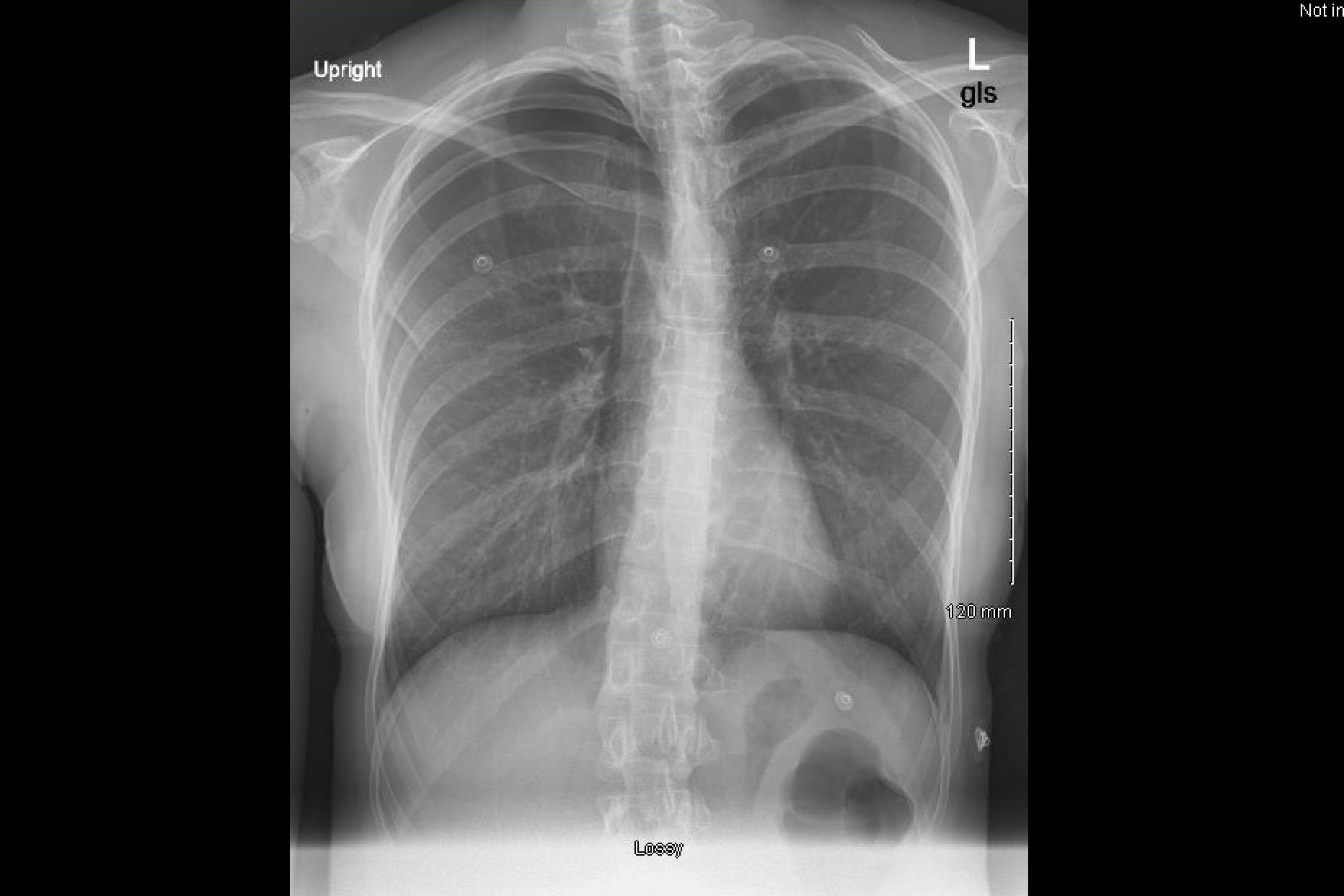Case Presentation: A 28-year-old female with a past medical history of anxiety and depression presented to the emergency room with complaints of severe right-sided chest pain. She underwent acupuncture, where needles were placed on the supra clavicular area of the chest, and presented with right-sided chest pain the next day. The chest pain radiated to the right shoulder, associated with shortness of breath, aggravated by cough and deep breath. She is a nonsmoker and takes sertraline for depression. Her Blood pressure was 126/82 mmHg, her heart rate of 88 per minute, and her oxygen saturation was 94% on room air. On examination, there was diminished air entry and hyper resonance on the right side of the chest.Chest x-ray revealed a right-sided pneumothorax in the apical region, with a mediastinal shift to the left concerning for the development of tension pneumothorax, and a chest tube was placed in the emergency room. The patient’s chest pain and shortness of breath resolved, a repeat chest x-ray showed resolution of the pneumothorax, the chest tube was removed after two days, and the patient was discharged to home.
Discussion: Acupuncture is an alternative medical therapy that has grown in popularity. Acupuncture’s widespread use has increased the demand for reliable information on safety concerns. Acupuncture-related complications are uncommon, but they range from minor side effects like local pain and hemorrhage to more serious complications like infection transmission (hepatitis B and C, HIV infection), pneumothorax, cardiac tamponade, vascular lesions, and spinal cord injuries.The rate of serious adverse events due to acupuncture was very low, 0.05 per 10,000 treatments, with pneumothorax being the most common adverse event, even accounting for deaths. (8). Postmortem examinations revealed that a 10-20 mm deep puncture is sufficient to reach the lung because its surface is about 15-20 mm beneath the skin. Placing the acupuncture needles on the para sternal and supra clavicular regions have a high risk of developing pneumothorax. The sequence of events in our case suggests a clear relationship between acupuncture and pneumothorax. Most patients develop pneumothorax immediately after acupuncture, but some develop symptoms much later, like our patient, who developed pneumothorax 24 hours after having the acupuncture. Both chest tube and pigtail catheter can be used to manage pneumothorax.
Conclusions: Acupuncture is a growing alternative medical therapy, and increased awareness of the potential complications of this invasive procedure is essential. Physicians must have a high suspicion of pneumothorax in patients developing chest pain after acupuncture.

